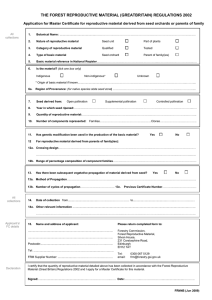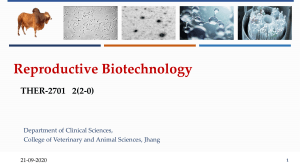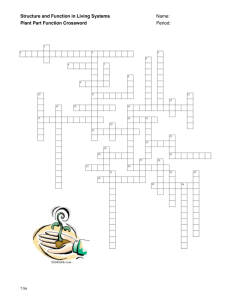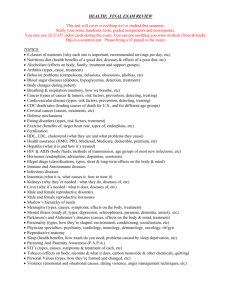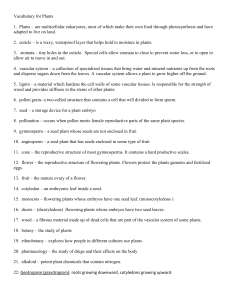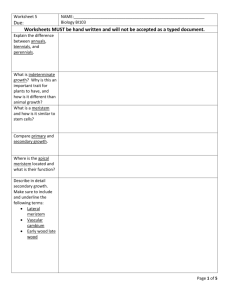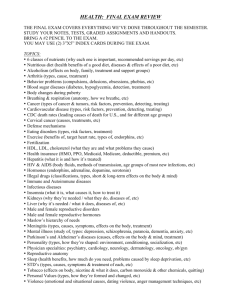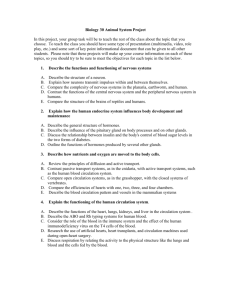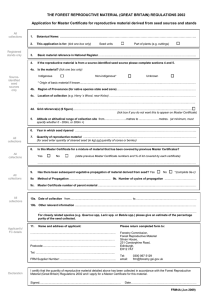Ch. 38 - Angiosperm Reproduction and Biotechnology
advertisement
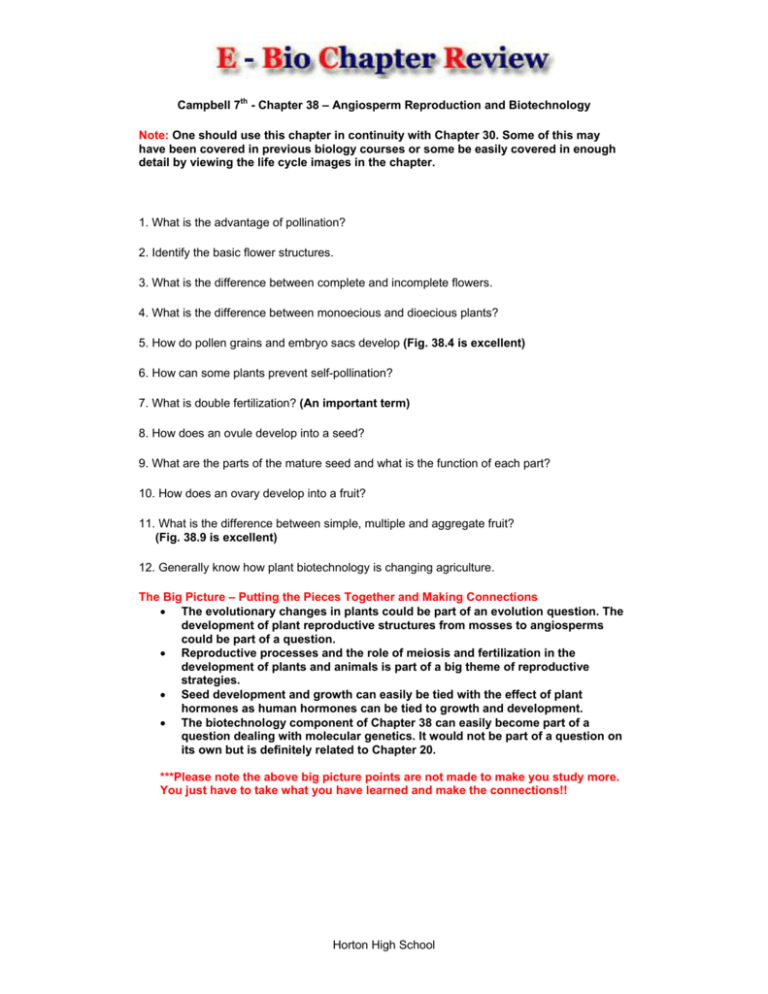
th Campbell 7 - Chapter 38 – Angiosperm Reproduction and Biotechnology Note: One should use this chapter in continuity with Chapter 30. Some of this may have been covered in previous biology courses or some be easily covered in enough detail by viewing the life cycle images in the chapter. 1. What is the advantage of pollination? 2. Identify the basic flower structures. 3. What is the difference between complete and incomplete flowers. 4. What is the difference between monoecious and dioecious plants? 5. How do pollen grains and embryo sacs develop (Fig. 38.4 is excellent) 6. How can some plants prevent self-pollination? 7. What is double fertilization? (An important term) 8. How does an ovule develop into a seed? 9. What are the parts of the mature seed and what is the function of each part? 10. How does an ovary develop into a fruit? 11. What is the difference between simple, multiple and aggregate fruit? (Fig. 38.9 is excellent) 12. Generally know how plant biotechnology is changing agriculture. The Big Picture – Putting the Pieces Together and Making Connections • The evolutionary changes in plants could be part of an evolution question. The development of plant reproductive structures from mosses to angiosperms could be part of a question. • Reproductive processes and the role of meiosis and fertilization in the development of plants and animals is part of a big theme of reproductive strategies. • Seed development and growth can easily be tied with the effect of plant hormones as human hormones can be tied to growth and development. • The biotechnology component of Chapter 38 can easily become part of a question dealing with molecular genetics. It would not be part of a question on its own but is definitely related to Chapter 20. ***Please note the above big picture points are not made to make you study more. You just have to take what you have learned and make the connections!! Horton High School

